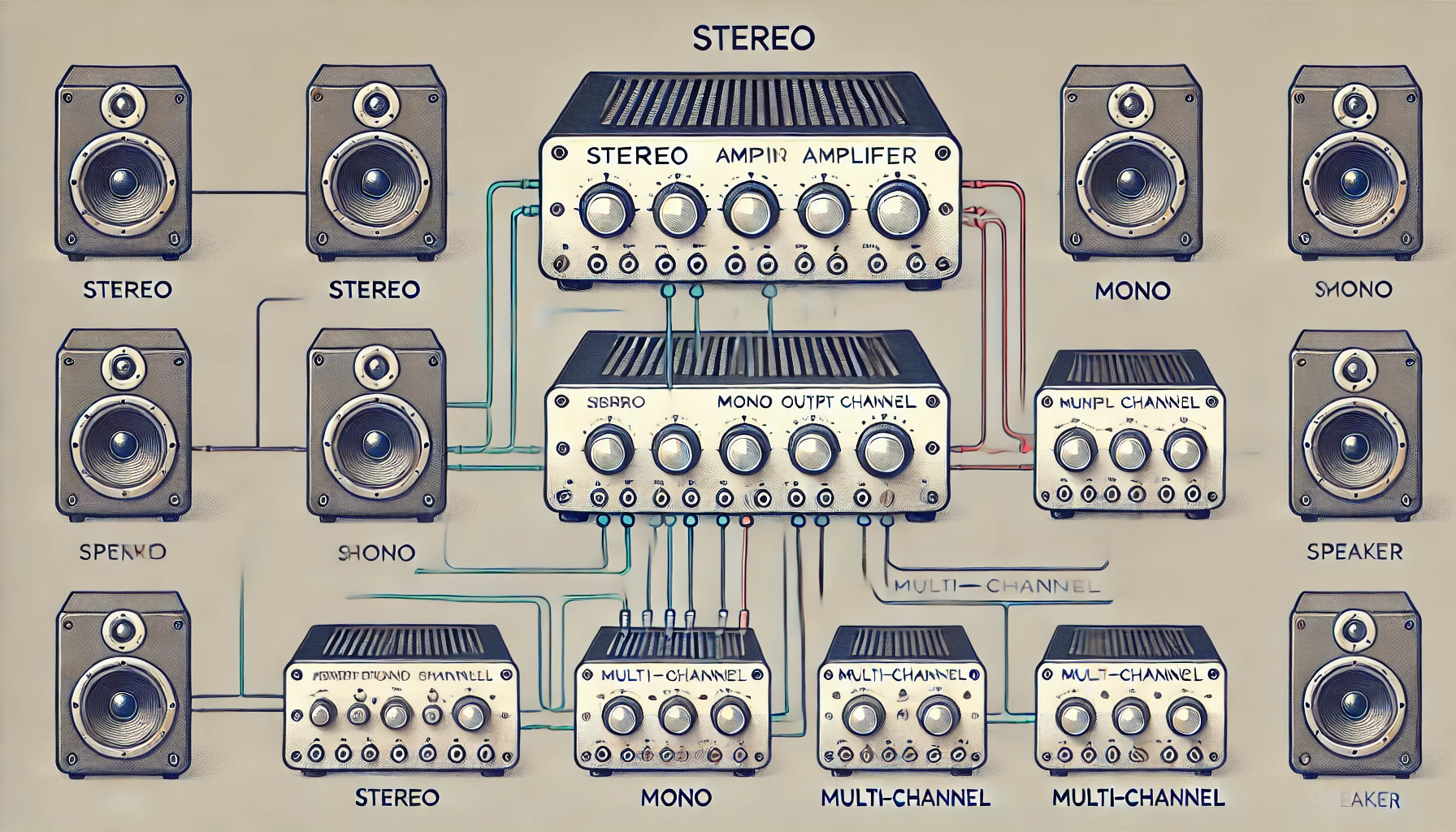In the world of audio equipment, amplifiers are crucial in shaping the sound experience. Whether you’re setting up a home theater, a professional recording studio, or a simple home stereo system, understanding the different amplifier configurations is key to achieving the best sound quality. In this article, we’ll delve into the most common amplifier configurations: Stereo, Mono, and Multi-Channel. We’ll explore their uses, benefits, and how they differ from one another, providing clear examples and tips to help you choose the right configuration for your needs.
What is an Amplifier?
Before diving into the different configurations, let’s first understand what an amplifier is. An amplifier, in audio terms, is a device that increases the power of a signal, making the sound louder without distorting its quality. Amplifiers are essential components in any audio system, providing the necessary power to drive speakers and produce clear, dynamic sound.
Stereo Amplifiers
Understanding Stereo Amplifiers
A stereo amplifier is designed to output two separate audio channels, typically left and right, providing a sense of space and directionality in the sound. This configuration is the most common in home audio systems and is essential for creating a wide soundstage.
Benefits of Stereo Amplifiers
- Enhanced Audio Quality: Stereo amplifiers deliver rich, detailed sound by distributing audio signals across two channels.
- Realistic Soundstage: By separating the audio into left and right channels, stereo amplifiers create a more immersive listening experience.
- Versatility: Ideal for music lovers, home theater enthusiasts, and casual listeners.
Tips for Using Stereo Amplifiers
- Speaker Placement: For optimal sound, place your speakers at equal distances from your listening position and slightly angled towards you.
- Quality Cables: Invest in high-quality speaker cables to minimize signal loss and interference.
- Matching Components: Pair your stereo amplifier with speakers that match its power output to avoid damage and ensure the best performance.
Mono Amplifiers
Understanding Mono Amplifiers
Mono amplifiers, or monoblock amplifiers, provide a single audio channel. They are commonly used in setups where multiple amplifiers are employed to drive separate speakers or subwoofers. Each monoblock amplifier handles one channel, ensuring maximum power and efficiency.
Benefits of Mono Amplifiers
- High Power Output: Mono amplifiers can deliver significant power, making them ideal for driving large speakers or subwoofers.
- Dedicated Channel: Each amplifier handles one channel, reducing the risk of crosstalk and distortion.
- Scalability: Easy to expand your system by adding more monoblock amplifiers as needed.
Tips for Using Mono Amplifiers
- System Matching: Ensure your speakers can handle the high power output of mono amplifiers.
- Balanced Connections: Use balanced cables (XLR) to connect your components, reducing noise and interference.
- Proper Ventilation: Monoblock amplifiers can generate a lot of heat, so ensure they are well-ventilated to prevent overheating.
Multi-Channel Amplifiers
Understanding Multi-Channel Amplifiers
Multi-channel amplifiers are designed to power several speakers simultaneously, typically used in home theater systems and multi-room audio setups. They can support configurations ranging from 5.1 (five speakers and one subwoofer) to 11.2 (eleven speakers and two subwoofers), offering a comprehensive sound experience.
Benefits of Multi-Channel Amplifiers
- Comprehensive Sound: Provides immersive surround sound, enhancing movie and music experiences.
- Convenience: One amplifier can power multiple speakers, simplifying your audio setup.
- Flexibility: Supports various configurations, allowing for customization based on your room and preferences.
Tips for Using Multi-Channel Amplifiers
- Room Calibration: Use room calibration tools to optimize the sound for your specific environment.
- Speaker Matching: Ensure all speakers in your setup are compatible with the amplifier’s power output and impedance.
- Subwoofer Placement: Position subwoofers carefully to avoid phase issues and ensure even bass distribution.
Choosing the Right Amplifier Configuration
Assess Your Needs
The first step in choosing the right amplifier configuration is to assess your specific needs. Consider the following factors:
- Listening Preferences: Do you prefer stereo music listening or immersive surround sound?
- Room Size: Larger rooms may benefit from multi-channel setups, while smaller spaces might be better suited for stereo or mono configurations.
- System Expansion: Think about whether you plan to expand your audio system in the future.
Examples and Recommendations
- For Music Enthusiasts: A high-quality stereo amplifier paired with a bookshelf or floor-standing speakers will deliver excellent sound quality for music listening.
- For Home Theaters: A multi-channel amplifier supporting at least 5.1 configurations is ideal for creating a cinematic experience in your living room.
- For Specialized Systems: Mono amplifiers are perfect for driving powerful subwoofers or large speakers in high-end audio systems.
Enhancing Your Audio Experience
When it comes to amplifying your audio system, choosing the right amplifier configuration is crucial. Whether you’re looking to achieve crystal-clear stereo sound, powerful mono output, or immersive multi-channel surround sound, understanding the benefits and applications of each configuration will help you make an informed decision. Stereo amplifiers are perfect for music lovers seeking detailed and spacious sound, while mono amplifiers provide high power for driving subwoofers and large speakers. Multi-channel amplifiers are ideal for home theater setups, offering a comprehensive and flexible audio solution. By carefully considering your listening preferences, room size, and future expansion plans, you can select the amplifier configuration that best meets your needs and enhances your overall audio experience.
Conclusion
Exploring different amplifier configurations is essential for optimizing your audio setup. Whether you choose a stereo amplifier for its balanced and detailed sound, a mono amplifier for its powerful single-channel output, or a multi-channel amplifier for its immersive surround sound capabilities, each configuration offers unique benefits. By understanding the strengths of each type and following the tips provided, you can make an informed decision that elevates your listening experience to new heights. Happy listening!

